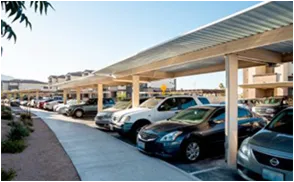- Afrikaans
- Albanian
- Amharic
- Arabic
- Armenian
- Azerbaijani
- Basque
- Belarusian
- Bengali
- Bosnian
- Bulgarian
- Catalan
- Cebuano
- Corsican
- Croatian
- Czech
- Danish
- Dutch
- English
- Esperanto
- Estonian
- Finnish
- French
- Frisian
- Galician
- Georgian
- German
- Greek
- Gujarati
- Haitian Creole
- hausa
- hawaiian
- Hebrew
- Hindi
- Miao
- Hungarian
- Icelandic
- igbo
- Indonesian
- irish
- Italian
- Japanese
- Javanese
- Kannada
- kazakh
- Khmer
- Rwandese
- Korean
- Kurdish
- Kyrgyz
- Lao
- Latin
- Latvian
- Lithuanian
- Luxembourgish
- Macedonian
- Malgashi
- Malay
- Malayalam
- Maltese
- Maori
- Marathi
- Mongolian
- Myanmar
- Nepali
- Norwegian
- Norwegian
- Occitan
- Pashto
- Persian
- Polish
- Portuguese
- Punjabi
- Romanian
- Russian
- Samoan
- Scottish Gaelic
- Serbian
- Sesotho
- Shona
- Sindhi
- Sinhala
- Slovak
- Slovenian
- Somali
- Spanish
- Sundanese
- Swahili
- Swedish
- Tagalog
- Tajik
- Tamil
- Tatar
- Telugu
- Thai
- Turkish
- Turkmen
- Ukrainian
- Urdu
- Uighur
- Uzbek
- Vietnamese
- Welsh
- Bantu
- Yiddish
- Yoruba
- Zulu
Лис . 04, 2024 21:25 Back to list
The Design of Steel Trusses for Roofing
Steel trusses have become a fundamental component in modern architectural design, particularly in the construction of roofs for various structures such as commercial buildings, sports facilities, and warehouses. The use of steel trusses offers numerous advantages, including high strength-to-weight ratios, durability, and design flexibility. This article explores the critical aspects of designing steel trusses for roofing, including their structural properties, types, and practical considerations.
Structural Properties of Steel Trusses
Steel is an ideal material for truss construction due to its strength and resilience. A typical steel truss consists of interconnected members that form a triangular framework. The triangular shape is inherently stable, allowing the truss to effectively distribute loads across its structure. This design minimizes the risk of buckling, making steel trusses capable of supporting significant weight, including the roof itself, as well as snow, wind loads, and equipment.
One of the primary considerations in truss design is the calculation of loads. Engineers must account for live loads (such as occupancy and equipment) and dead loads (the weight of the truss and roof materials) when designing the framework. The use of the correct load calculations ensures safety and longevity in the structure. Additionally, factors like deflection limits and material fatigue must be considered to prevent structural failure over time.
Types of Steel Trusses
There are several types of steel trusses commonly used in roofing, each with its unique design features and applications
1. King Post Truss This design includes a central vertical post that helps support the load. It's ideal for smaller spans and simpler roof designs.
2. Queen Post Truss Similar to the king post truss, but it includes two vertical posts. This design allows for longer spans and provides greater stability.
3. Scissor Truss This type features two sloping members that intersect at the center, creating an open ceiling space. Scissor trusses are often used in areas where aesthetic considerations are important.
design of steel trusses for roofing

5. Howe Truss This design involves diagonally placed members that create a zigzag pattern, offering robust support for heavy loads.
Each of these types of trusses can be tailored to fit specific design requirements, making them versatile solutions for various roofing projects.
Practical Considerations in Design
When embarking on the design of steel trusses, several practical considerations must be addressed to ensure the project meets both functional and aesthetic standards.
1. Material Selection Choosing high-quality steel that can withstand environmental conditions is critical. Factors such as corrosion resistance and thermal expansion must be evaluated, especially in regions with extreme weather.
2. Connection Design The joints where truss members connect are crucial for stability and performance. Engineers often employ bolted or welded connections, each coming with its benefits and challenges. Properly designed connections ensure that forces are efficiently transferred throughout the truss.
3. Aesthetic Integration Beyond structural performance, the visual appeal of steel trusses can significantly influence the overall design of a building. Architectural considerations, such as the exposure of trusses and the integration of lighting, can enhance the interior space while maintaining the structural integrity.
4. Regulatory Compliance Adhering to building codes and regulations is essential in the design process. Codes determine safety thresholds and construction standards to protect occupants and ensure the longevity of the structure.
5. Cost and Efficiency Finally, the economic aspect of truss design cannot be overlooked. Optimizing material usage and reducing labor costs while maintaining safety and functionality is a goal for every engineering project.
Conclusion
The design of steel trusses for roofing is a multifaceted process that involves careful consideration of structural properties, types, and practical aspects. Through precise engineering and innovative design, steel trusses provide an efficient, durable, and visually appealing solution for modern roofs. As building technologies continue to evolve, steel trusses are poised to play an even more significant role in architectural design, contributing to both functionality and aesthetic value in constructions worldwide.
-
Cold Formed Steel Residential Framing
NewsMay.21,2025
-
Innovative Steel Structure Building Solutions
NewsMay.19,2025
-
Innovative Prefab Metal Shed Solutions
NewsMay.19,2025
-
Durable Steel Horse Shelter Solutions
NewsMay.19,2025
-
Durable Metal Shed Solutions
NewsMay.19,2025
-
Durable Big Metal Shed Solutions
NewsMay.19,2025
Products categories
Our Latest News
We have a professional design team and an excellent production and construction team.












